40 thin layer chromatography diagram
column chromatography - chemguide The column. In thin layer chromatography, the stationary phase is a thin layer of silica gel or alumina on a glass, metal or plastic plate. Column chromatography works on a much larger scale by packing the same materials into a vertical glass column. Various sizes of chromatography columns are used, and if you follow a link at the bottom of the ... PDF Thin layer chromatography TLC - BMB & Chemistry IT Thin Layer Chromatography. Thin layer chromatography, or TLC, is a method for analyzing mixtures by separating the compounds in the mixture. TLC can be used to help determine the number of components in a mixture, the identity of compounds, and the purity of a compound. By observing the appearance of
laboratoryinfo.com › gas-chromatography-principleGas Chromatography - Principle, Application, Procedure and ... Image 3: The image above shows how gas chromatography works (diagram). Picture Source: shimadzu.com The sample solution is placed into the gas chromatograph and enters the gas stream which transports the sample into the column (separation tube).

Thin layer chromatography diagram
PDF CHEM 344 Thin Layer Chromatography CHEM 344 Thin Layer Chromatography Thin layer chromatography (TLC) is a useful technique for the separation and identification of compounds in mixtures. TLC is used routinely to follow the progress of reactions by monitoring the consumption of starting materials and the appearance of products. Principle and Procedure of Thin Layer Chromatography - HPLC Thin-layer chromatography is a technique in which the analytes of a mixture are separated by differential migration through the stationary phase. TLC is performed on glass, aluminum or plastic sheets. It is coated with a thin layer of adsorbent material, typically made using silica gel, aluminum oxide, or cellulose and is known as a stationary ... Thin layer chromatography - PubMed Thin layer chromatography (TLC) is one of the easiest and most versatile methods of doing this because of its low cost, simplici … In many experiments, it is important to be able to separate a mixture into its chemical components in order to isolate one compound or to assess the purity of the mixture.
Thin layer chromatography diagram. Thin Layer Chromatography (With Diagram) Thin layer chromatography is done exactly as it says-using a thin, uniform layer of silica gel or alumina coated onto a piece of glass, metal or rigid plastic. ADVERTISEMENTS: The silica gel (or the alumina) is the stationary phase. The stationary phase for thin layer chromatography also often contains is substance which fluoresces in UV light. 3 Main Types of Chromatography Techniques (With Diagram) Thin layer chromatography is similar to paper chromatography for identification, separation and purification of components of a mixture. Here ascending technique is used like the paper chromatography. Principle: The chromatography technique involves the partition of components of a mixture to be separated between the two phases which move with respect to each other. Column Chromatography - Principle, Procedure, Applications ... Chromatographic procedure generally involves introducing at the top of the column the mixture of the components to be separated, developing the mixture with a suitable agent, and collecting the components in separate effluent fractions. The best developing agent in thin-layer chromatography was Petroleum ether: ethyl acetate. Thin Layer Chromatography - Detailed Explanation, and FAQs Thin Layer Chromatography Diagram [Image will be uploaded Soon] Components Required TLC Plates: The plates used are chemically inert and stable, where a thin layer of stationary phase is applied on its surface layer. The stationary phase on the plates is of fine particle size and is of uniform thickness.
Thin Layer Chromatography (TLC) - Principle, procedure ... Thin Layer Chromatography is a technique used to isolate non-volatile mixtures. The experiment is conducted on a sheet of aluminium foil, plastic, or glass which is coated with a thin layer of adsorbent material. The material usually used is aluminium oxide, cellulose, or silica gel. PDF paper chromatography - College of Engineering thin layer and paper chromatography. Unfortunately, it is more complicated than that! The complication arises because the cellulose fibres attract water vapour from the atmosphere as well as any water that was present when the paper was made. You can therefore think of paper as being cellulose fibres with a very thin layer of water Thin Layer Chromatography (TLC): Principle and Procedure ... TLC or Thin Layer Chromatography TLC is a type of planar chromatography. Researchers routinely use it in the field of phytochemicals, biochemistry, and so forth to identify the components in a compound mixture, like alkaloids, phospholipids, and amino acids. It is a semi-quantitative method consisting of analysis. (PDF) Thin Layer Chromatography - ResearchGate Thin layer chromatography (TLC) is a quick, sensitive, and inexpensi ve technique used to determine the number of components in a mixture, verify the identity and purity of a compound, monitor the...
Partition Chromatography - Principle, Diagram, Types and ... Column Chromatography - In this type of liquid-liquid chromatography, liquid stationary phase is taken on silica gel or alumina cellulose powder. Thin layer Chromatography - In this type of Liquid -Liquid chromatography, a very thin layer of stationary phase is taken that's why it is known as thin layer chromatography. It is used to separate non-volatile mixtures. Chromatography: Definition, Diagram & Types, Uses Chromatography is a separation and analytical technique used to split a soluble mixture into its component parts. Chromatography involves a static medium, known as the stationary phase, a solvent, known as the mobile phase, and a mixture that you want to analyse. Thin Layer and Column Chromatography - Odinity Out of all methods to separate compounds, Thin Layer Chromatography (TLC) and Column Chromatography are some of most effective. TLC is typically used for identifying the number of compounds in a mixture as well as their relative polarities as opposed to physically separating them, which can be accomplished with Column Chromatography. PDF Thin Layer Chromatography (TLC) - Boston College Thin layer chromatography (TLC) is an easy, convenient and inexpensive way to determine how many components are in a mixture and, in many instances, can be used to identify the components as well. In today's experiments, you will gain experience with both paper and thin layer chromatography, you will work with a variety of developing
Thin Layer Chromatography (TLC): Principle, Procedure ... Thin layer chromatography is a kind of chromatography used to separate and isolate mixtures that are non-volatile in nature. Just like other chromatography processes, this one consists of a mobile phase and a stationary phase. The latter one here is a thin layer of absorbent material, such as aluminium oxide, silica gel, or cellulose.
Principle and Procedure of Thin Layer Chromatography Thin-layer chromatography is a technique in which the analytes of a mixture are separated by differential migration through the stationary phase. TLC is performed on glass, aluminum or plastic sheets. It is coated with a thin layer of adsorbent material, typically made using silica gel, aluminum oxide, or cellulose and is known as a stationary ...
Thin Layer Chromatography: A Complete Guide to TLC Usually, a thin layer chromatography plate is around 5-7 cm high, and a line is drawn around 0.5-1.0 cm from the bottom. That is the line in which you will spot your mixtures to separate. It is important that you spot the mixtures above the solvent level on your elution chamber!
Thin-Layer Chromatography Process The diagram below illustrates the complete thin-layer chromatography process. Sample Preparation Thin-Layer Chromatography plates are economical, single-use products, so sample preparation is simpler or can be avoided completely and is by this more economical than for HPLC.
› chemistry › sitesAn Introduction to Gas Chromatography Mass Spectrometry a thin layer of liquid phase (partition chromatography). Most common form today is a capillary column, in which a virtual liquid phase, often polymer, is coated or bonded on the wall of the capillary tube.
Thin Layer Chromatography - University of California, Los ... Thin-layer chromatography (TLC) is a very commonly used technique in synthetic chemistry for identifying compounds, determining their purity and following the progress of a reaction. It also permits the optimization of the solvent system for a given separation problem.
thin layer chromatography - chemguide A small drop of the mixture is placed on the base line of the thin layer plate, and similar small spots of the known amino acids are placed alongside it. The plate is then stood in a suitable solvent and left to develop as before. In the diagram, the mixture is M, and the known amino acids are labelled 1 to 5.
Thin layer chromatography - Chemical analysis - Higher ... Thin layer chromatography (TLC) is similar to paper chromatography but instead of paper, the stationary phase is a thin layer of an inert substance (eg silica) supported on a flat, unreactive...
Thin Layer Chromatography (TLC) - orgchemboulder.com Thin Layer Chromatography (TLC) TLC is a simple, quick, and inexpensive procedure that gives the chemist a quick answer as to how many components are in a mixture. TLC is also used to support the identity of a compound in a mixture when the R f of a compound is compared with the R f of a known compound (preferably both run on the same TLC plate).
laboratoryinfo.com › hplcHigh Performance Liquid Chromatography (HPLC) : Principle ... Mar 09, 2022 · After that, in 1937-38, thin-layer chromatography (TLC) was used. The next significant advancement was the use of paper chromatography in the mid-1940s. Thin-layer chromatography (TLC) advanced slowly during the next few years, but Egon Stahl made significant development in 1956.
Schematic diagram of HPTLC method of separation | Download ... Download scientific diagram | Schematic diagram of HPTLC method of separation from publication: High Performance Thin Layer Chromatography (HPTLC): A Modern Analytical Tool for Chemical Analysis ...
Thin Layer Chromatography- Definition, Principle, Parts ... Principle of Thin Layer Chromatography (TLC) Thin-layer chromatography is performed on a sheet of glass, plastic, or aluminium foil, which is coated with a thin layer of adsorbent material, usually silica gel, aluminium oxide (alumina), or cellulose. This layer of adsorbent is known as the stationary phase.
qualifications.pearson.com › content › damCore practical 11: Investigate the presence of different ... chromatography solvent into a boiling tube to a depth of no more than 1 cm. Insert the bung. As an alternative to this practical, you could carry out an investigation using thin layer chromatography by following one of the many suitable protocols available online. This procedure instead uses paper chromatography, which relies on materials
PDF Experiment 6 — Thin-Layer Chromatography - Amherst Thin-layer chromatography (TLC) is an extremely valuable analytical technique in the organic lab. It provides a rapid separation of compounds, and thereby gives an indication of the number and nature of the components of a mixture. TLC can also be used to identify compounds
Thin layer chromatography - PubMed Thin layer chromatography (TLC) is one of the easiest and most versatile methods of doing this because of its low cost, simplici … In many experiments, it is important to be able to separate a mixture into its chemical components in order to isolate one compound or to assess the purity of the mixture.
Principle and Procedure of Thin Layer Chromatography - HPLC Thin-layer chromatography is a technique in which the analytes of a mixture are separated by differential migration through the stationary phase. TLC is performed on glass, aluminum or plastic sheets. It is coated with a thin layer of adsorbent material, typically made using silica gel, aluminum oxide, or cellulose and is known as a stationary ...
PDF CHEM 344 Thin Layer Chromatography CHEM 344 Thin Layer Chromatography Thin layer chromatography (TLC) is a useful technique for the separation and identification of compounds in mixtures. TLC is used routinely to follow the progress of reactions by monitoring the consumption of starting materials and the appearance of products.
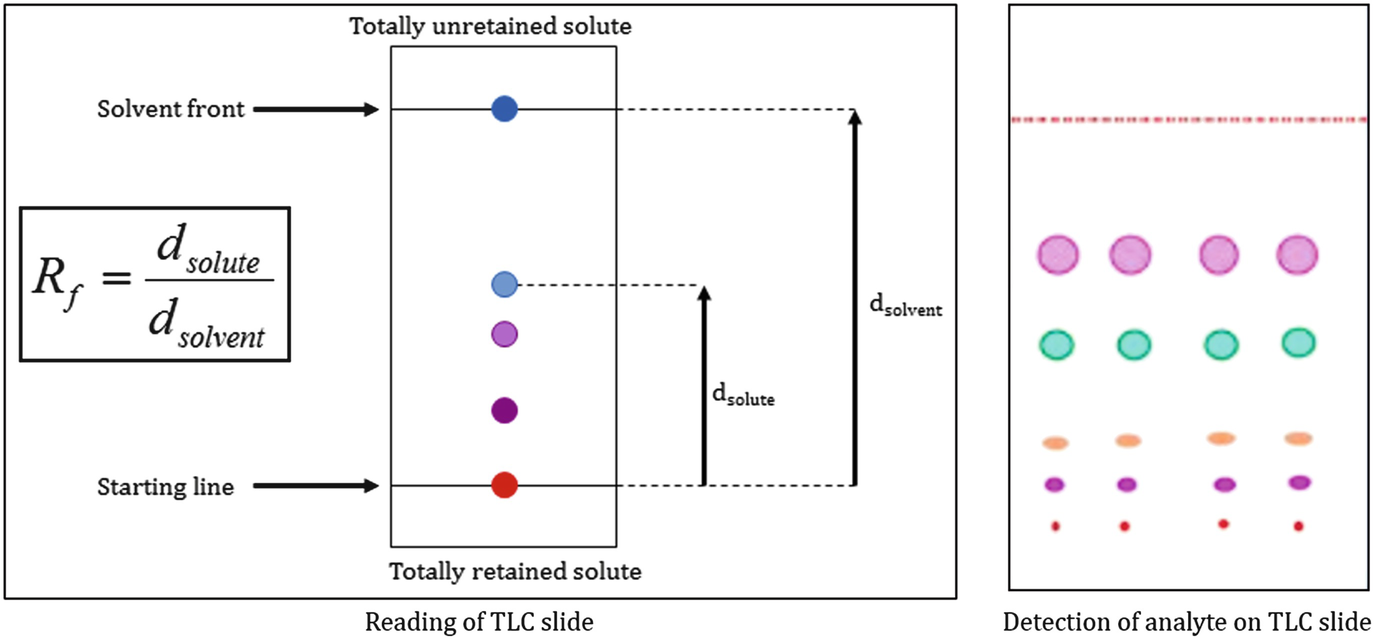

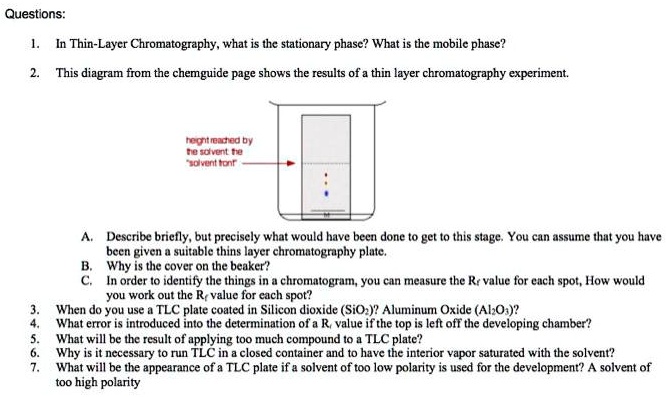



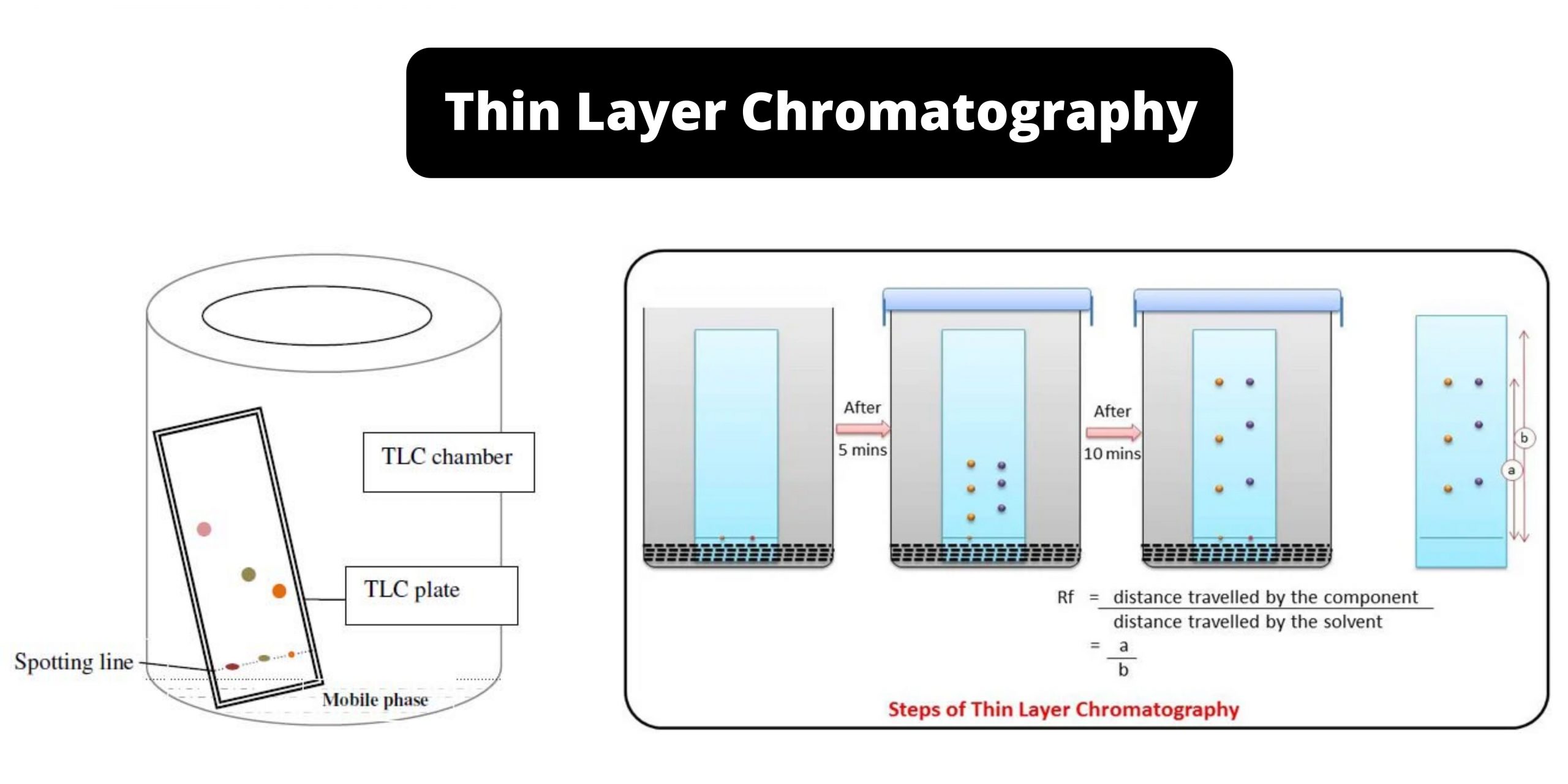
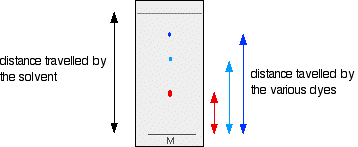
![High performance thin layer chromatography [5] | Download ...](https://www.researchgate.net/profile/Rekha-Priyadarshini/publication/289525226/figure/fig3/AS:315255268888578@1452174121518/High-performance-thin-layer-chromatography-5_Q640.jpg)


![High performance thin layer chromatography [5] | Download ...](https://www.researchgate.net/profile/Rekha-Priyadarshini/publication/289525226/figure/fig3/AS:315255268888578@1452174121518/High-performance-thin-layer-chromatography-5.png)


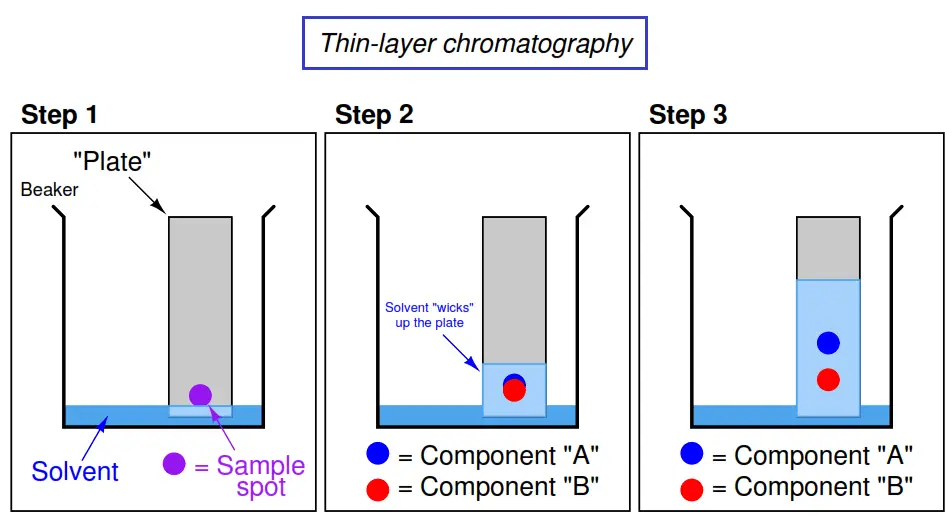

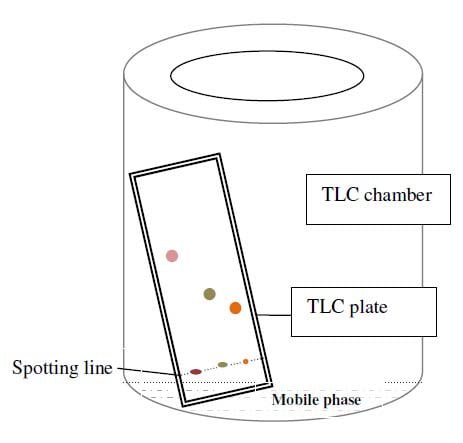
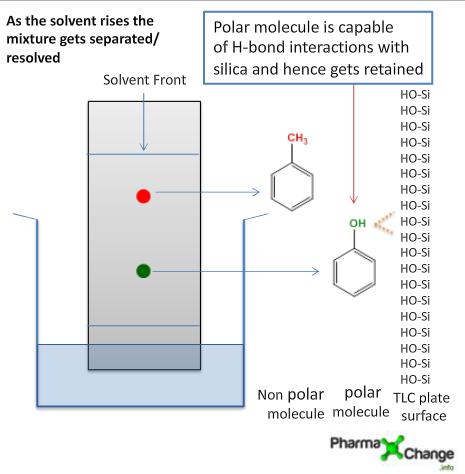


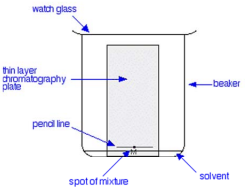

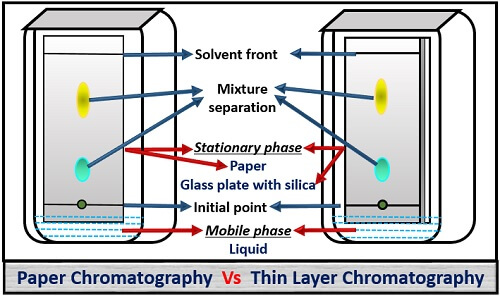


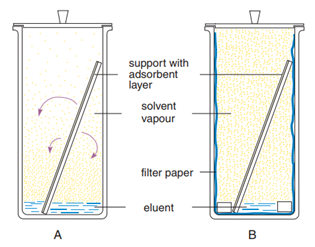
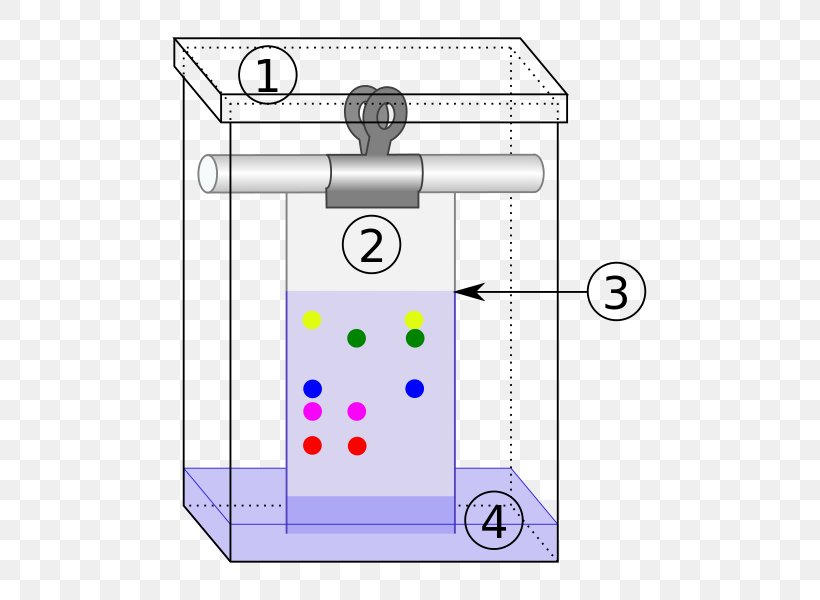






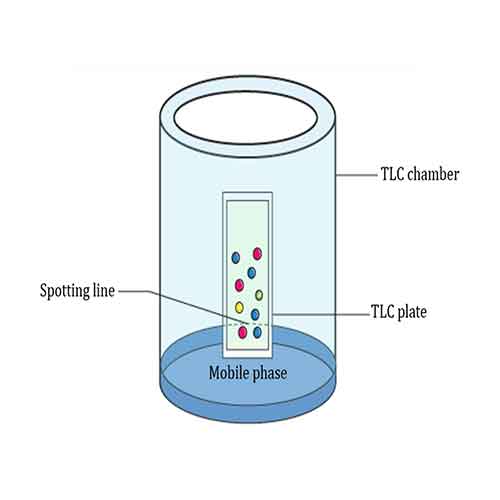
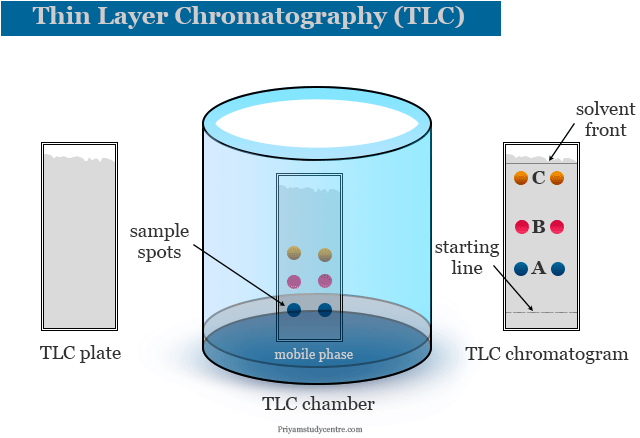
0 Response to "40 thin layer chromatography diagram"
Post a Comment